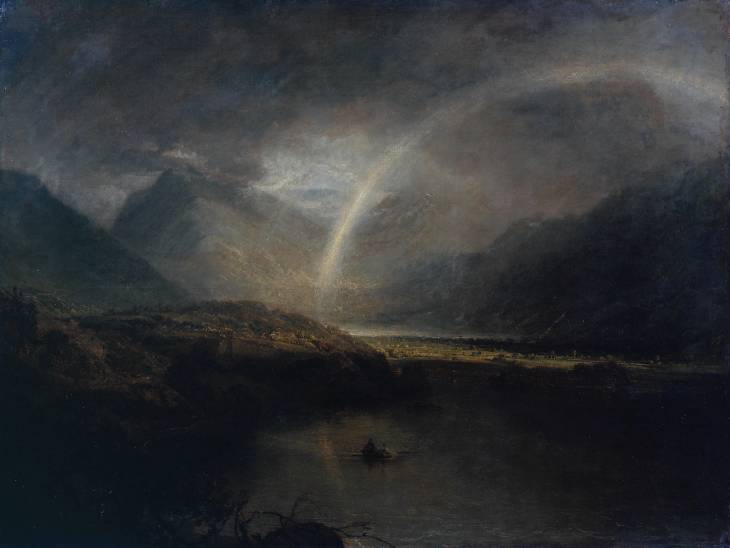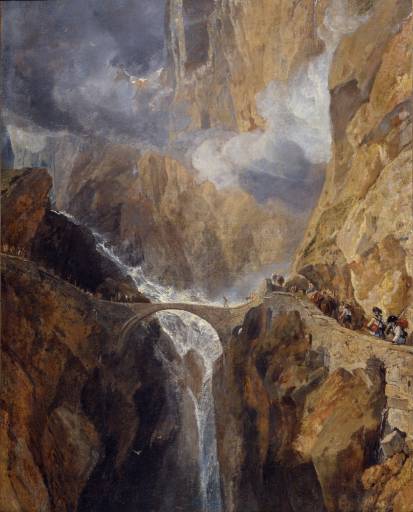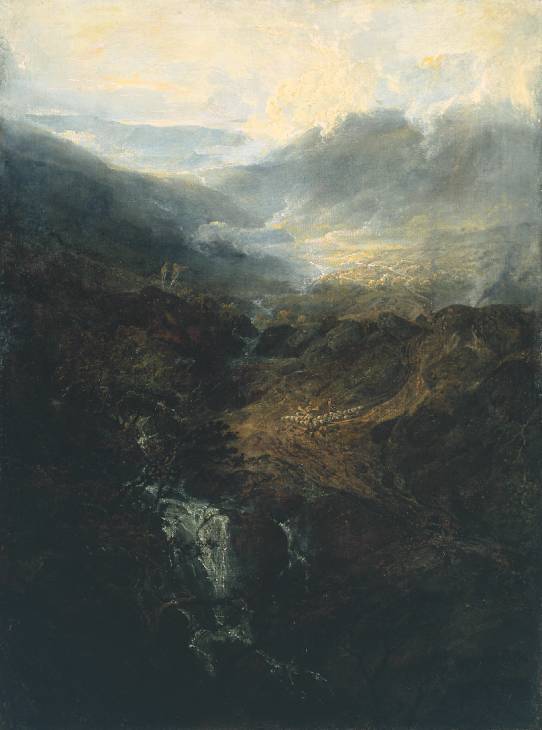 I love writing about landscapes. I’m probably guilty of finding them far more interesting to write about, at times, than human beings. That’s because I think so much of humanity is defined by the natural world we emerged from (and I include the weather as a part of that). For so many thousands of years we depended so crucially on the land, on the fertile earth and the just-right ratio between sunshine and showers, that the behaviour of the landscape dictated the terms of our culture. I bet you could root everything that we do and are in the way the Earth behaved back in the day. Landscapes are a mirror held up to humanity, which may explain our tendency to romanticise them, to take comfort in the idea that there is a wild country out there to which we might one day retreat and in which we might be better connected to ourselves. It could also explain part of the affront we feel when a landscape is bulldozed or sliced in half by a new motorway or rail link.
I love writing about landscapes. I’m probably guilty of finding them far more interesting to write about, at times, than human beings. That’s because I think so much of humanity is defined by the natural world we emerged from (and I include the weather as a part of that). For so many thousands of years we depended so crucially on the land, on the fertile earth and the just-right ratio between sunshine and showers, that the behaviour of the landscape dictated the terms of our culture. I bet you could root everything that we do and are in the way the Earth behaved back in the day. Landscapes are a mirror held up to humanity, which may explain our tendency to romanticise them, to take comfort in the idea that there is a wild country out there to which we might one day retreat and in which we might be better connected to ourselves. It could also explain part of the affront we feel when a landscape is bulldozed or sliced in half by a new motorway or rail link.
 I like writing that reflects these notions by making the landscape something or someone who gets involved in the lives of those who inhabit it. Likewise in the ‘real world’ (I hate that term but there are few alternatives for what it implies) … Likewise in the world of sticks and stones, some landscapes lend themselves so well to personification that they become distinct characters. Mountains are good examples, named and ascribed with personalities that reflect their nature. A mountain of sun-bathed sloping meadows where sheep graze and crops grow is a gentle giant. Conversely, a collossal tor atop which the stormclouds muster and down whose flinty slopes the flash floods race is a menacing behemoth who’d like nothing better than to snuff out the little beings who dwell beneath its shadow.
I like writing that reflects these notions by making the landscape something or someone who gets involved in the lives of those who inhabit it. Likewise in the ‘real world’ (I hate that term but there are few alternatives for what it implies) … Likewise in the world of sticks and stones, some landscapes lend themselves so well to personification that they become distinct characters. Mountains are good examples, named and ascribed with personalities that reflect their nature. A mountain of sun-bathed sloping meadows where sheep graze and crops grow is a gentle giant. Conversely, a collossal tor atop which the stormclouds muster and down whose flinty slopes the flash floods race is a menacing behemoth who’d like nothing better than to snuff out the little beings who dwell beneath its shadow.
 I try to save up and collect pictures of landscapes that appear to me so rich in character that I can imagine them rising up to walk the horizons when everybody else is tucked safely in bed. While I was writing The Man who Rained I filled my pinboard with Turner’s landscape paintings. I bought a hefty catalogue of his work and filled a notebook trying to describe his mountains and his skies in prose. Much of the descriptive writing in the novel originated in such scribbling. They call Turner the painter of light but he’s as much for me the painter of the air itself, for wherever he paints a mountain he paints a haze or formative cloud, or a full-blown Biblical torrent smashing its way to the foreground.
I try to save up and collect pictures of landscapes that appear to me so rich in character that I can imagine them rising up to walk the horizons when everybody else is tucked safely in bed. While I was writing The Man who Rained I filled my pinboard with Turner’s landscape paintings. I bought a hefty catalogue of his work and filled a notebook trying to describe his mountains and his skies in prose. Much of the descriptive writing in the novel originated in such scribbling. They call Turner the painter of light but he’s as much for me the painter of the air itself, for wherever he paints a mountain he paints a haze or formative cloud, or a full-blown Biblical torrent smashing its way to the foreground.
I had vague intentions of posting various other images and photos saved up during the writing process. The internet is a great source for creating virtual scrapbooks to reference when stuck for words. But rather than include those I’ll just link to the below video, which came out when I was finishing up the novel’s final edit and which tours rather breath-takingly the sort of places I was aiming to describe.
I Break Horses – Hearts from Bella Union on Vimeo.
Giving types of mountains personalities is an interesting idea to me, especially since we just discussed personification in my Creative Writing class. One girl thought it was best left to poetry, but to me it’s about changing your perspective about everyday objects. One thing I thought of was if a mountain moved (to use the old saying) where would it go and why?
Anyways, about your personalities idea, I wonder if Mt. Everest was personified what would it be like? I imagine a weary old man who was sad for all the people trying to climb him. Of course, this could be influenced by the fact that I just read Into Thin Air. I think my view of Mt. Everest would be very different if I hadn’t just read it.